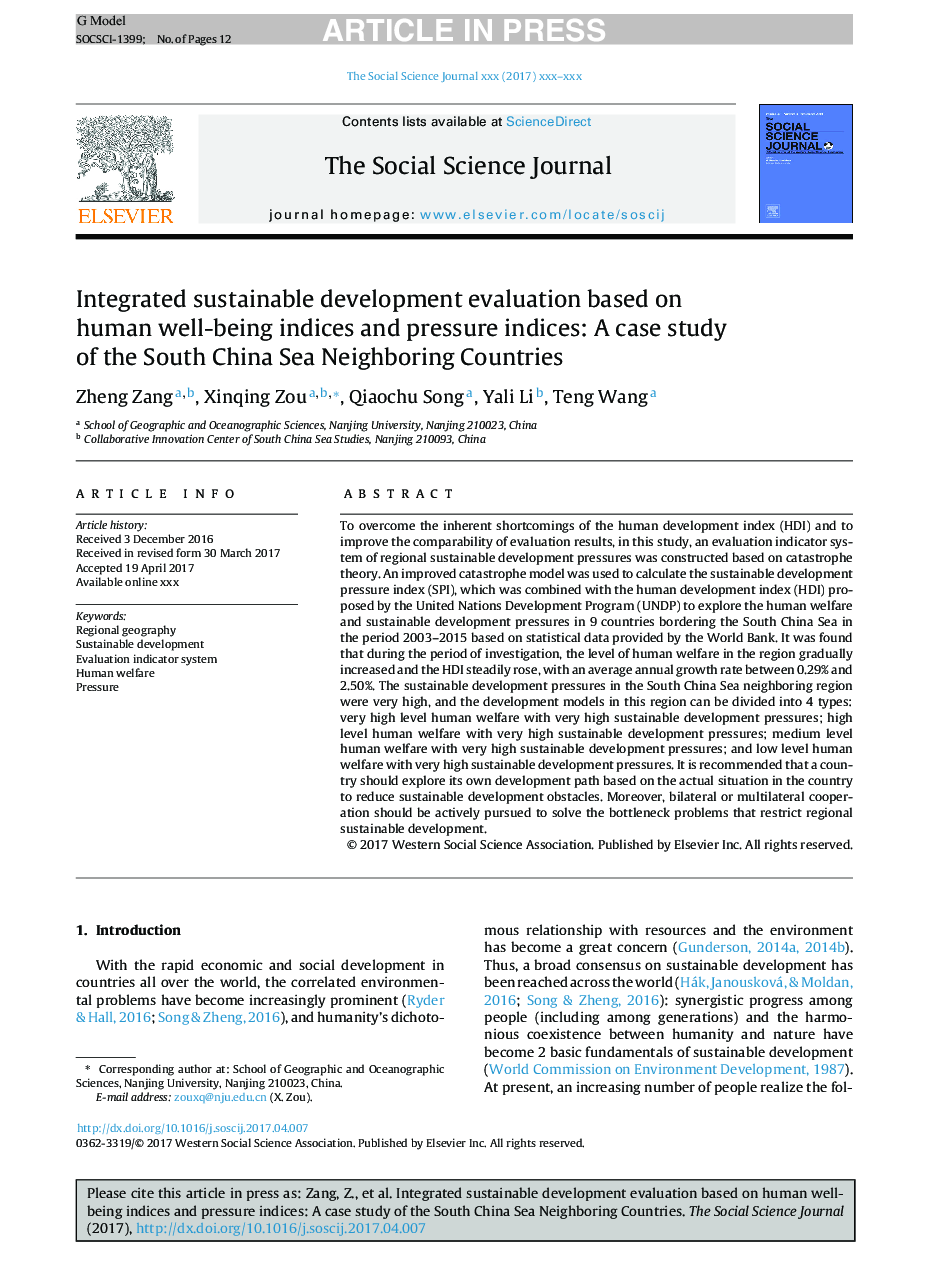| Article ID | Journal | Published Year | Pages | File Type |
|---|---|---|---|---|
| 4761896 | The Social Science Journal | 2017 | 12 Pages |
Abstract
To overcome the inherent shortcomings of the human development index (HDI) and to improve the comparability of evaluation results, in this study, an evaluation indicator system of regional sustainable development pressures was constructed based on catastrophe theory. An improved catastrophe model was used to calculate the sustainable development pressure index (SPI), which was combined with the human development index (HDI) proposed by the United Nations Development Program (UNDP) to explore the human welfare and sustainable development pressures in 9 countries bordering the South China Sea in the period 2003-2015 based on statistical data provided by the World Bank. It was found that during the period of investigation, the level of human welfare in the region gradually increased and the HDI steadily rose, with an average annual growth rate between 0.29% and 2.50%. The sustainable development pressures in the South China Sea neighboring region were very high, and the development models in this region can be divided into 4 types: very high level human welfare with very high sustainable development pressures; high level human welfare with very high sustainable development pressures; medium level human welfare with very high sustainable development pressures; and low level human welfare with very high sustainable development pressures. It is recommended that a country should explore its own development path based on the actual situation in the country to reduce sustainable development obstacles. Moreover, bilateral or multilateral cooperation should be actively pursued to solve the bottleneck problems that restrict regional sustainable development.
Related Topics
Social Sciences and Humanities
Psychology
Social Psychology
Authors
Zheng Zang, Xinqing Zou, Qiaochu Song, Yali Li, Teng Wang,
